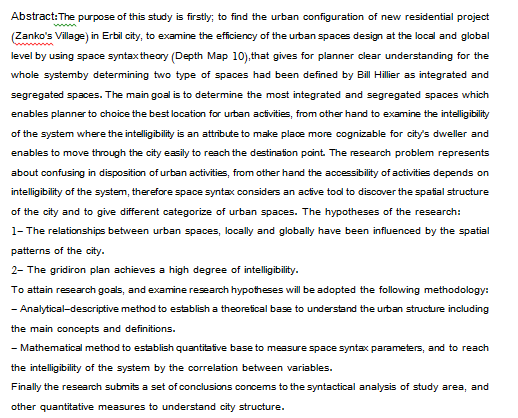The combination of wavelet theory and neural networks has lead to the development of wavelet networks. Wavelet networks are feed-forward neural networks using wavelets as activation function. Wavelets networks have been used in classification and identification problems with some success.
In this work we proposed a fuzzy wavenet network (FWN), which learns by common back-propagation algorithm to classify medical images. The library of medical image has been analyzed, first. Second, Two experimental tables’ rules provide an excellent opportunity to test the ability of fuzzy wavenet network due to the high level of information variability often experienced with this type of images.
&n
... Show MoreThe growing use of tele
This paper presents a new secret diffusion scheme called Round Key Permutation (RKP) based on the nonlinear, dynamic and pseudorandom permutation for encrypting images by block, since images are considered particular data because of their size and their information, which are two-dimensional nature and characterized by high redundancy and strong correlation. Firstly, the permutation table is calculated according to the master key and sub-keys. Secondly, scrambling pixels for each block to be encrypted will be done according the permutation table. Thereafter the AES encryption algorithm is used in the proposed cryptosystem by replacing the linear permutation of ShiftRows step with the nonlinear and secret pe
... Show More (3)
(3)
This paper presents a meta-heuristic swarm based optimization technique for solving robot path planning. The natural activities of actual ants inspire which named Ant Colony Optimization. (ACO) has been proposed in this work to find the shortest and safest path for a mobile robot in different static environments with different complexities. A nonzero size for the mobile robot has been considered in the project by taking a tolerance around the obstacle to account for the actual size of the mobile robot. A new concept was added to standard Ant Colony Optimization (ACO) for further modifications. Simulations results, which carried out using MATLAB 2015(a) environment, prove that the suggested algorithm outperforms the standard version of AC
... Show More (22)
(22)
Simplification of new fashion design methods
In this paper, we focus on designing feed forward neural network (FFNN) for solving Mixed Volterra – Fredholm Integral Equations (MVFIEs) of second kind in 2–dimensions. in our method, we present a multi – layers model consisting of a hidden layer which has five hidden units (neurons) and one linear output unit. Transfer function (Log – sigmoid) and training algorithm (Levenberg – Marquardt) are used as a sigmoid activation of each unit. A comparison between the results of numerical experiment and the analytic solution of some examples has been carried out in order to justify the efficiency and the accuracy of our method.
... Show More
 (2)
(2)
Analysis of Covariance consider to be quite important procedure to reduce the effect of some independents factors before going through the experiment.
By this procedure we can compare variances causes from the difference between treatments and error term variance of they are equals or less than consider to be not significant, otherwise if is significant.
We carry on with this comparison until we find the greatest covser for the significant variance flam the treatments.
There are methods can be used like least significant difference method, Duncan method and Turkeys' w-procedure and Student Newman.
Key Word: Analysis of variatio
... Show MoreThe synthesis of nanoparticles (GNPs) from the reduction of HAuCl4 .3H2O by aluminum metal was obtained in aqueous solution with the use of Arabic gum as a stabilizing agent. The GNPs were characterized by TEM, AFM and Zeta potential spectroscopy. The reduction process was monitored over time by measuring ultraviolet spectra at a range of λ 520-525 nm. Also the color changes from yellow to ruby red, shape and size of GNP was studied by TEM. Shape was spherical and the size of particles was (12-17.5) nm. The best results were obtained at pH 6.
 (4)
(4)
 (2)
(2)
In this paper, double Sumudu and double Elzaki transforms methods are used to compute the numerical solutions for some types of fractional order partial differential equations with constant coefficients and explaining the efficiently of the method by illustrating some numerical examples that are computed by using Mathcad 15.and graphic in Matlab R2015a.
 (4)
(4)
In this paper, an enhanced artificial potential field (EAPF) planner is introduced. This planner is proposed to rapidly find online solutions for the mobile robot path planning problems, when the underlying environment contains obstacles with unknown locations and sizes. The classical artificial potential field represents both the repulsive force due to the detected obstacle and the attractive force due to the target. These forces can be considered as the primary directional indicator for the mobile robot. However, the classical artificial potential field has many drawbacks. So, we suggest two secondary forces which are called the midpoint
... Show MoreThe simulation of passively Q-switching is four non – linear first order differential equations. The optimization of passively Q-switching simulation was carried out using the constrained Rosenbrock technique. The maximization option in this technique was utilized to the fourth equation as an objective function; the parameters, γa, γc and β as were dealt with as decision variables. A FORTRAN program was written to determine the optimum values of the decision variables through the simulation of the four coupled equations, for ruby laser Q–switched by Dy +2: CaF2.For different Dy +2:CaF2 molecules number, the values of decision variables was predicted using our written program. The relaxation time of Dy +2: CaF2, used with ruby was
... Show More
